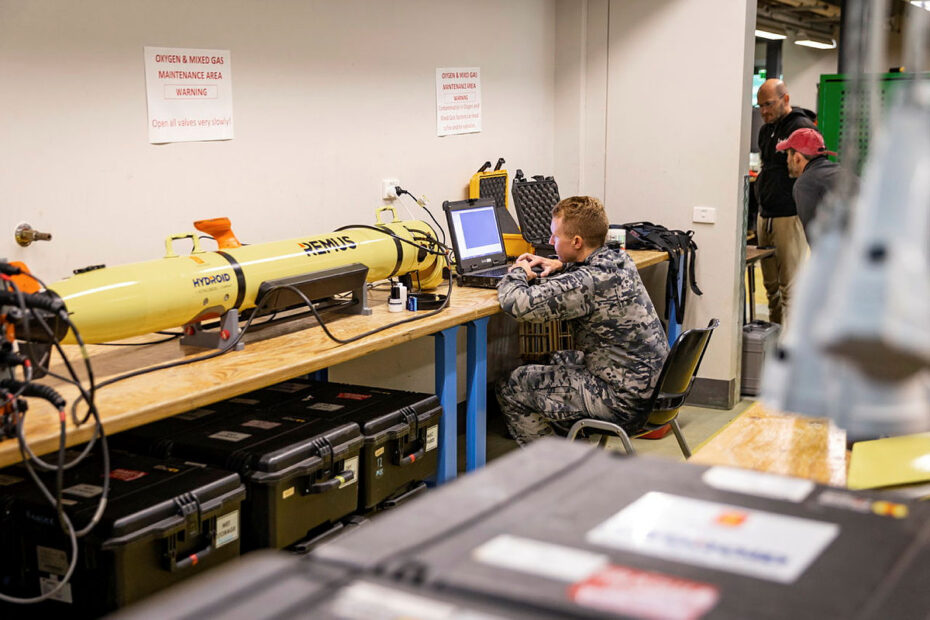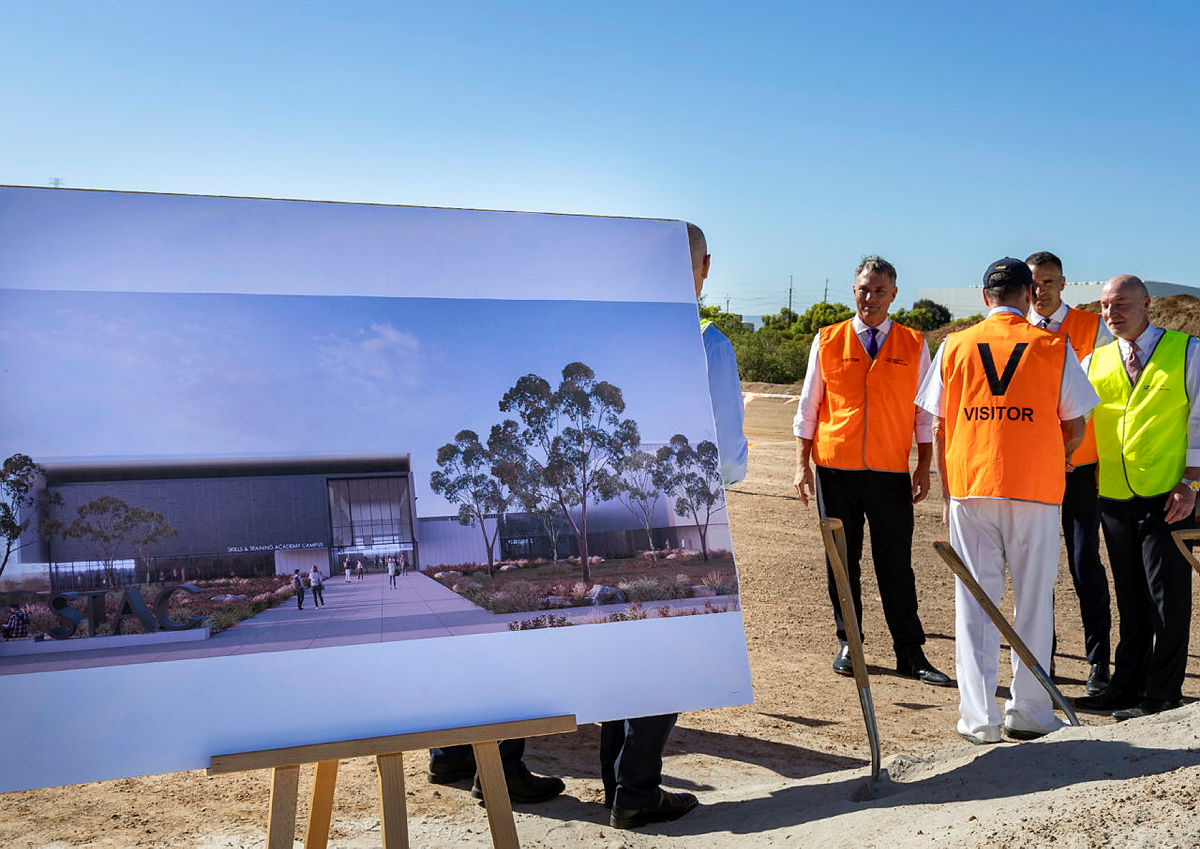Royal Australian Navy Petty Officer Eric Duthie prepares communication equipment for the Remus 100S Autonomous underwater vehicle during Exercise AUKUS at Pittwater, New South Wales. IBP23.3 is an AUKUS Pillar 2 exercise that took place in the Sydney region, including in Broken Bay and in the area offshore Sydney Heads between 23 October and 5 November 2023. The exercise tested a range of robotics and autonomous systems and other capabilities designed to confront emerging maritime security challenges. The Exercise saw a variety of force elements attend from the three partner AUKUS nations, including the RAN’s Mine Hunter Coastal HMAS Gascoyne, Undersea Support Vessel ADV Guidance, the UK’s offshore Patrol Vessel HMS Tamar and the USA’s Littoral Combat Ship USS Oakland. (Photo Credit: Australian Department of Defence)
In a national first, the Malinauskas Labor Government will introduce a new statewide innovation model to strategically connect the state’s growing innovation districts including Lot Fourteen, Tonsley and Adelaide BioMed City.
As the state prepares to take advantage of the once-in-a-lifetime opportunity presented by AUKUS, the new model will see a framework developed to connect the innovation districts with each other and other knowledge and manufacturing hubs including the Osborne Naval Shipyard, the Edinburgh Defence Precinct and the future Australian Space Park.
This approach will be the catalyst to stimulating economic growth, supporting valuable international knowledge transfer and collaboration.
This will create new opportunities for jobs growth, linking state-wide education, skills and workforce programs for equitable and inclusive access to future jobs.
The framework, to be developed by Lot Fourteen State Project Lead Di Dixon, will seek to capitalise on South Australia’s competitive advantage in defence, space, advanced manufacturing and critical technologies industries like renewable energy, cyber, information warfare, quantum computing and artificial intelligence.
South Australia’s Economic Activity Zones and innovation assets have the potential to accommodate a skilled workforce of approximately 44,000 people.
“Geo-political instability, climate change and a post-COVID economy pose challenges for the globe. But these problems also present an opportunity for a state like South Australia. We have the ingenuity to make significant contributions to the world’s economic future. But we need to be smart and connected. A clear state-wide position bringing together all Economic Activity Zones and innovation assets under a centralised strategic vision and policy position will unlock greater value from these investments made by successive governments”, SA Premier Peter Malinauskas said.
“This framework offers a dynamic vehicle to support state-wide job placement and enhance regional connectivity to support strategic investment, and drive new clusters of economic activity and job creation. We will leverage the power of proximity and connection to supercharge innovation and in so doing lay the foundation for new and more inclusive prosperity. Innovation assets are formidable job engines. Research has shown that for each innovation intensive job an innovation district supports, it creates an average of 4 to 5 production and service-related jobs”, Lot Fourteen State Project Lead Di Dixon said.
Originally published by the Office of the Premier of South Australia on 30/03/2023.




